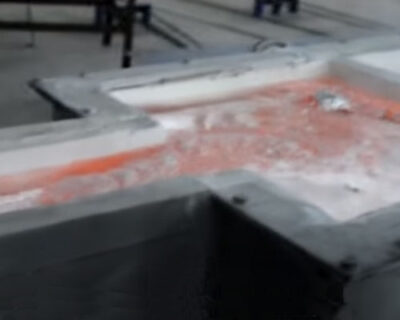Aluminum melt filtration is important for aluminum foundry. It is necessary to remove the inclusion in the aluminum melt.
The existence of inclusions in aluminum alloys has adverse effects on the quality and properties of aluminum products in many different ways. This is not conducive to the fatigue strength of aluminum alloy specially used in the automobile and aviation industry.
The presence of inclusions also leads to defects in the processing: longitudinal beams on rolled products (for high hardness inclusions), debonding on forged products, and tearing during high plastic deformation (extrusion, rolling, and molding).
In the canning industry, the restriction on the inclusion content is strict: the inclusion concentration must be less than 10^-4 ppm to meet the canning manufacturer’s requirements.
For liquid aluminum, the elimination of inclusions is particularly important. Although efforts have been made to reduce the concentration of inclusions, the high reactivity of liquid aluminum and the presence of refractory materials will inevitably lead to the formation of new inclusions in liquid metal, from the melt processing stage to the casting of semi-finished products.

Alumina ceramic foam filter aluminum melt filtration is used to eliminate inclusions in the molten metal. Ceramic foam filters are widely used in molten metal filtration. It is made of polyurethane foam, dried, and sintered. The porosity is as high as 80% – 90%. The ceramic foam filter has a network structure and has a certain intensity. It can bear the pressure difference of metal liquid surface and the influence of metal flow, but it is fragile and fragile. Due to the precise structure of the material, uniform quality, and large surface area, the filtration effect is very good.
Ceramic foam filters aluminum melt filtration is filtered in two modes: cake filtration, where suspended particles are larger than the pore size of the filter, and are deposited at the entrance of the filter, forming a cake that is constantly increasing in thickness, forming a practical filter medium. Deep filtration, in which the size of suspended particles is smaller than the size of the filter hole, thus entering the filter and depositing in the filter.

